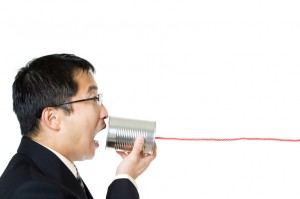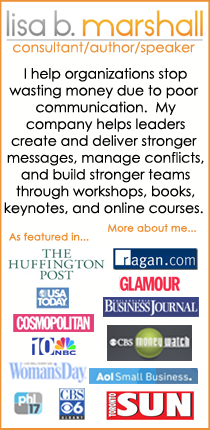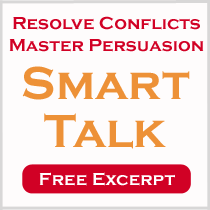Why your conference calls suck!
Question: How do I get people to pay attention and participate during our conference calls?
 Let’s face it. Most conference calls suck. Participants mute their phone and start responding to email or start working on other projects. That’s why I recommend that you implement (Lisa) Marshall Law for better conference calls: add more structure and use engagement/facilitation techniques.
Let’s face it. Most conference calls suck. Participants mute their phone and start responding to email or start working on other projects. That’s why I recommend that you implement (Lisa) Marshall Law for better conference calls: add more structure and use engagement/facilitation techniques.
Add More Structure for Conference Calls
Unfortunately, many in-person meetings are informal with no agenda and no defined leader. When carried forward to a conference call, these bad meeting habits are magnified and cause issues. To be effective, conference calls must follow effective meetings basics including: planning and developing an agenda, respecting time, keeping record of the decisions/next steps, and quickly following-up.
I’ve written about effective meeting basics here or you can listen about effective meeting fundamentals here.
Hosting Conference Call Guideline
However, the basics are not enough. Conference calls require additional specific, clear, and consistent guidelines. For example, as with normal meetings, the host should arrive early and encourage punctuality. For a conference call, without the host attendees usually cannot join the call and are left in hold. A specific guideline needs to be in place on how to get the meeting started, in case the leader is running late. Your guidelines might require another delegate to know the host code or for the meeting to be cancelled if the host is more than five minutes late.
Waiting Conference Call Guideline
Another guideline needs to be in place to keep track of who joins the call. One option is to take a verbal roll call; then make sure everyone can hear each other and call the meeting to order. Another guideline should be in place for using the time while waiting for all delegates to join. One option is to prime attendees for engagement by asking simple open-ended questions such as, “What are you plans for the weekend?” or “What is your top priority this week?” This seemingly insignificant activity can significantly increase trust and participation. I suggest using chat for the responses, but they could be verbal too.
Agenda Conference Call Guideline
As with a standard meeting, it usually begins with a review of the agenda. Guidelines should be created to ensure that each participant is called on to see if there are any additional changes or additions to the agenda. Also, managing the agenda requires additional verbal cues because of the missing visual cues. “That takes care of item two. Let’s move on to item three.”
Disruptions Conference Call Guideline
Disruptions are much more common for conference calls. It’s already difficult to maintain attention, but it’s critical that colleagues hear each others’ ideas. Ask delegates to use hand-sets (no speaker phones unless specifically designed for conference calling), to turn off email and other non-essential applications, to use an “in conference” indicator, and ensure that children and pets are supervised when calling from home. Establish a “no eating” during the call.
Bathroom breaks don’t need to be announced. Have delegates message the meeting leader to excuse themselves and rejoin the call. Simplify this by pre-planning the protocol for situations that may arise during the meeting. For example, if someone has to leave the call for a few minutes, should they hang up and call back or put the group on hold? What if a participant inadvertently puts the group on hold? Additional ground rules like these will increase participation and interactivity.
Interaction and Engagement Conference Call Guidelines
Establish protocol for input and interaction. Don’t let delegates interrupt, however, calling on people encourages active participation, and helps to avoid one person hogging the spotlight. Just remember to mix it up and never call on people in the same order.
While on the call, little changes will make the meeting more engaging. Draw participants in. One of the facilitator’s most important jobs is to draw people into the discussion. The facilitator may say, “Joe will speak first, then Elizabeth can offer her input. After that, we’ll open it up to everyone.” Maintain order. As participants begin to feel more comfortable, they may become more verbal. If people begin to speak over each other, the facilitator should firmly but kindly maintain order. At first, participants may feel as if a teacher is calling them on to answer in class, but it will become easier for everyone over time.
Use Verbal and Visual Cues for Conference Calls
Do you talk with your hands or nod in agreement? Many people do but unspoken communication doesn’t lend itself to conference calls. Have the team verbalize all communication. For example, “Tracy, I’m nodding. I think you’re right.”
One way to engage delegates is to provide head shots, particularly for global colleagues they may never have met in-person. This will enable them to connect a voice with a face, which, in turn, builds trust and engagement. Another option to infuse energy and increase ownership is to have team members rotate leadership. At a minimum, this helps to gain appreciation for the role of leader.
You can enjoy productive conference calls if you implement good structure, designate a facilitator, and keep distractions to a minimum. Use Marshall Law to make your next conference call your best yet. This is Lisa B. Marshall. Passionate about communication; your success is my business.
How much money does poor or ineffective communication cost your organization?
I help organizations and individuals develop and enhance their business communication skills. For example, my team and I have helped organizations build stronger teams, manage conflict, create stronger, more effective messages, and deliver better presentations. In addition, we’ve coached many senior leaders one-on-one to develop stronger executive communication skills.
Here are some of the organizations I’ve helped: Johns Hopkins Medicine, Harvard University, NY Academy of Science, Memorial Sloan-Kettering Cancer Center, University of Pennsylvania, Genentech, and Roche among many others. Contact me to learn how I can help you and your team to enhance productivity and improve the bottom line through more effective communication.











Share Your Thoughts!